As an Amazon Associate I earn from qualifying purchases.
I am here to tell you that freshwater drum, also called gaspergou, are good to eat. They are not overly different from their saltwater cousins, and, when treated right, are great table fare. Here are some tips on cooking freshwater drum, along with some freshwater drum recipes at the end.
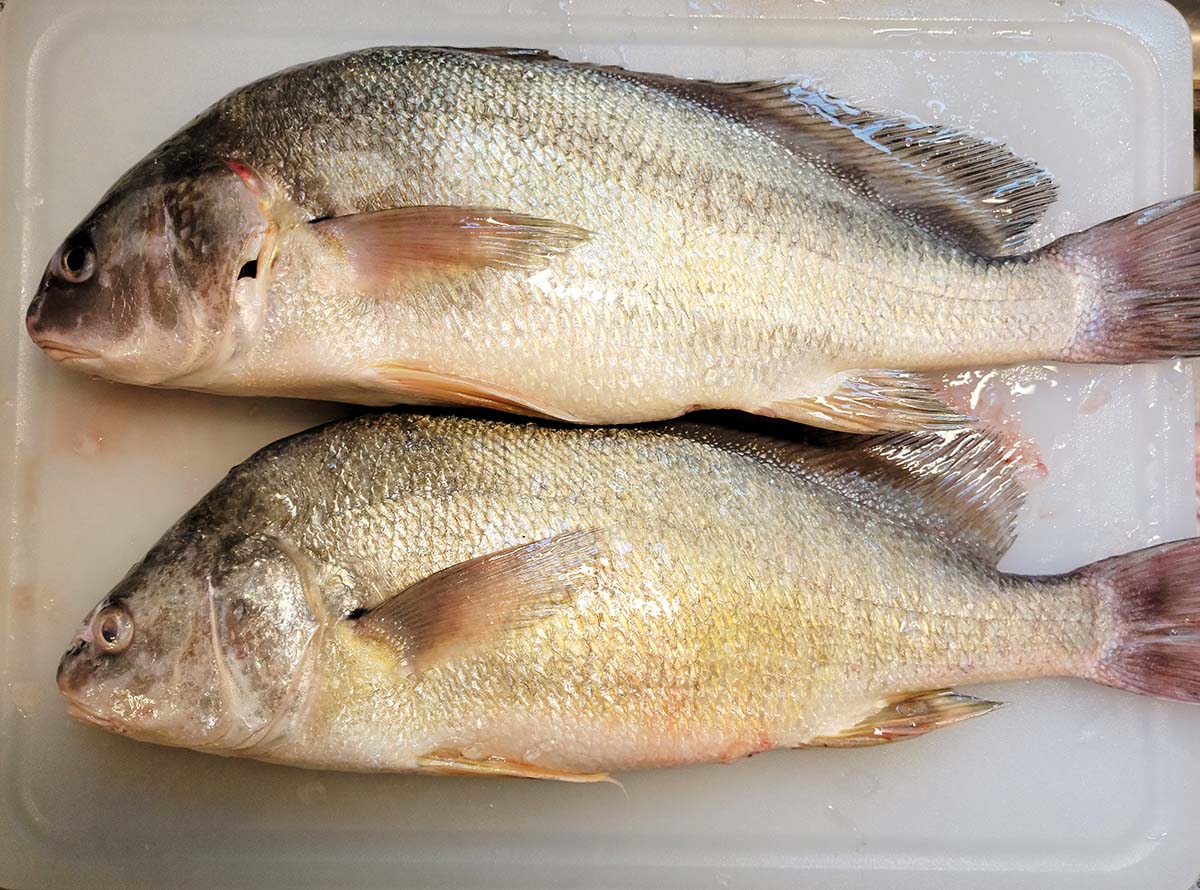
Aplodinotus grunniens, called sheephead by many, is the only freshwater member of the drum family in America, and is widespread and abundant. I’ve caught them as far apart as Manitoba and Louisiana, and in the Great Lakes as well as rivers.
No one ever told me that eating freshwater drum wasn’t a thing, so when I first started catching them in Minnesota back in about 2002, I simply cooked them like what they looked like to me — kinda like a really big porgy, or an oddly shaped croaker.
Turns out they are cousins to croakers, as well as redfish and black drum, among other species. When I learned that all those years ago, I simply treated them like other drum in the kitchen.
freshwater drum diet
Diet affects flavor, so it’s worth knowing. Gaspergou love shellfish when they can get them, especially zebra mussels and other small, freshwater bivalves. They also eat a lot of crawfish when they’re around.
Early in their development, freshwater drum primarily eat insects; this is also a big-ticket item in springtime for all sized fish. Once the summer hits, they often switch to fish, notably gizzard shad. This can make sheephead noticeably oily — great for smoking.
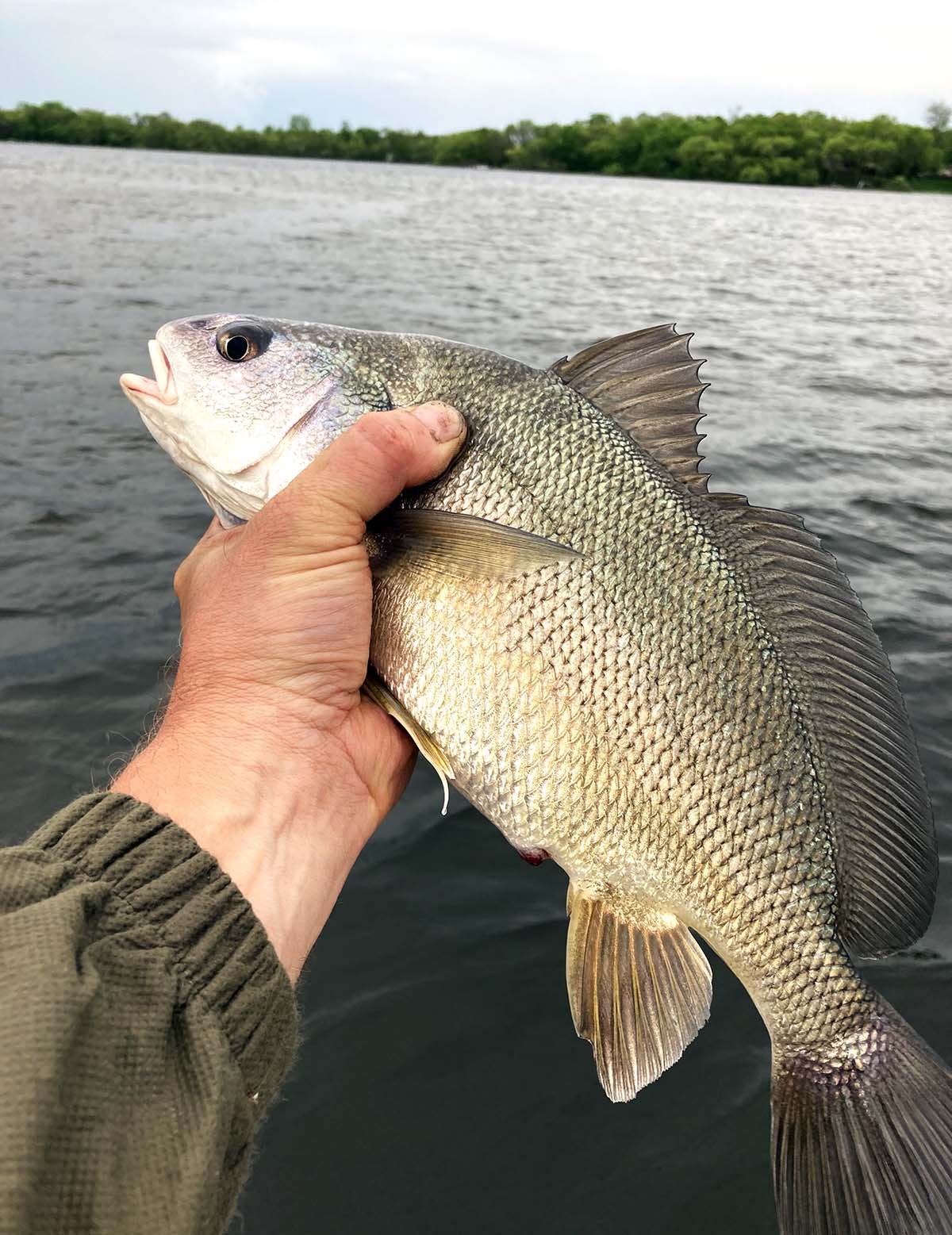
Prepping Gaspergou
Over the years, I’ve noticed that eating freshwater drum has become more popular, and I suspect that’s because more anglers are prepping them with care. First and foremost, gaspergou can get mushy if they’re allowed to heat up after the catch: So bring ice!
But if you forgot ice, keep them alive in your boat’s live well, or on a stringer, until you get ready to go home.
The next step is to bleed the fish. This is important, because bleeding keeps the meat white and clean, and helps prevent it from getting soft. Simply use your fingers, a knife or shears to cut the fish’s gills, then put them in a bucket of water or over the side on a stringer to bleed out for about 15 to 20 minutes. Then ice them.
Cooking freshwater drum depends on their size. Large ones can be filleted like any other drum, porgy, or bass-like fish; gaspergou have large, heavy ribs so you might want to use shears to get through them; otherwise you will dull your knife. They do not have any “extra” bones like pike or carp.
Smallish sheephead are best cooked whole, scaled and gutted, with the gills cut out.
Large freshwater drum fillets can be kept scales-on for a version of the classic Louisiana dish redfish on the halfshell, which is normally done with the saltwater red drum. The scales offer protection from the heat of the grill, and since you never flip the fish in this recipe, it comes out perfect.
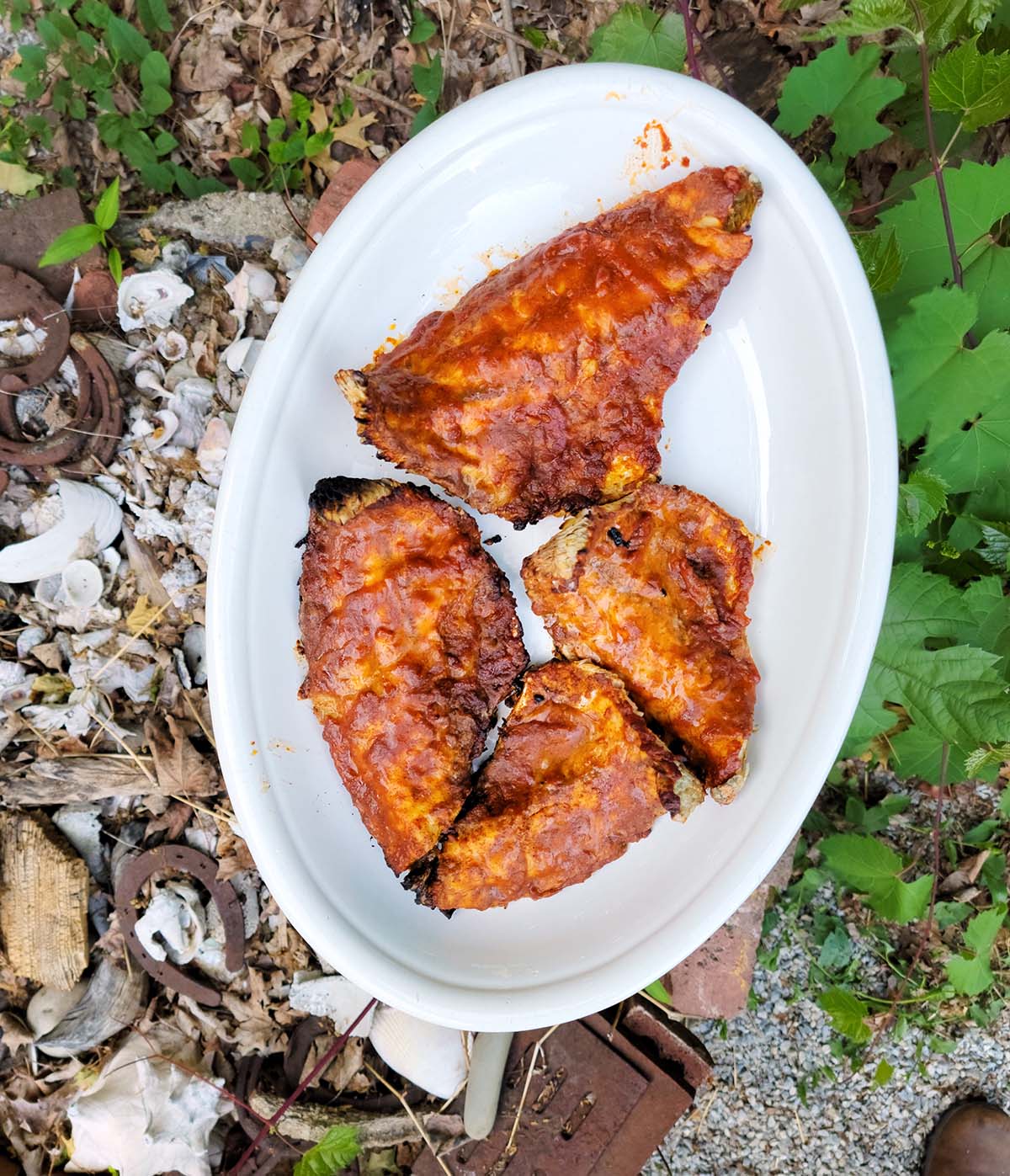
freshwater drum texture
If you’ve prepped them correctly, the texture of freshwater drum can be very firm, firmer than most other freshwater fish. I liken it to grouper or even sturgeon.
This has lead some cooks to cut the fillets into strips and simmer them — sometimes in 7-Up, like burbot — and serve them as “poor man’s shrimp.” I don’t love this recipe, because while the fish is OK, it’s really not very shrimp-like. I prefer other methods, detailed below.
You can cook freshwater drum like any other fish, but keep in mind it won’t be as tender and flaky as, say, a walleye. Think firm and meaty.
freshwater drum recipes
My favorite ways of eating freshwater drum are grilling and smoking. While you can fry sheephead, they are often so firm it can weird some people out if they’re expecting, say, the texture of fried catfish.
If you do fry gaspergou, use the method I use for fried flounder, which is a pretty standard flour-egg wash-breadcrumb dredge. This helps the breading stick to the fish.
Simmered and stewed dishes take advantage of drum’s firmness, however, so use freshwater drum in any fish stew you want, and especially in place of catfish in my catfish courtbuillon recipe.
The following are all recipes that will work well for freshwater drum:
Courtbuillon
Grilled Fish on the ‘Half Shell’
Mexican Grilled Whole Fish
Southern Fish Stew
Seafood Gumbo
Lake Erie Chowder
Calabrian Fish, ‘Glutton’s Style’
Goan Fish Curry
Mexican Fish Balls
Fish with Spanish Green Sauce
If you liked and of these recipes, please leave a ⭐️⭐️⭐️⭐️⭐️ rating and a comment below; I’d love to hear how everything went. If you’re on Instagram, share a picture and tag me at @huntgathercook.

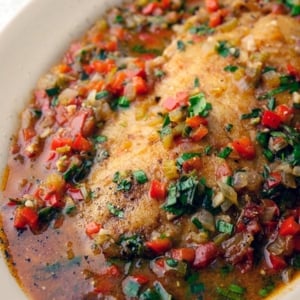

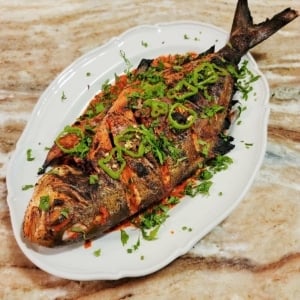
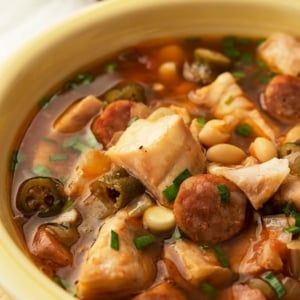

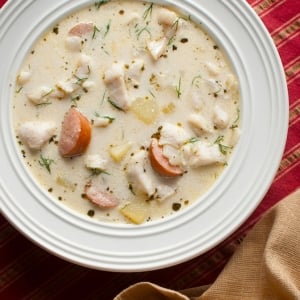
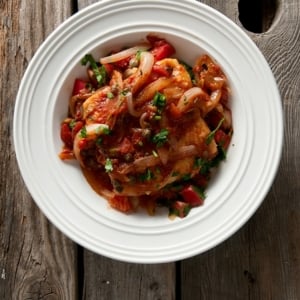
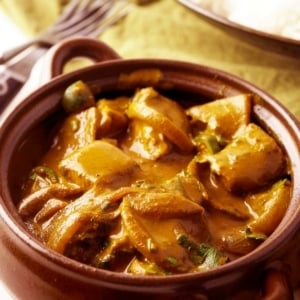
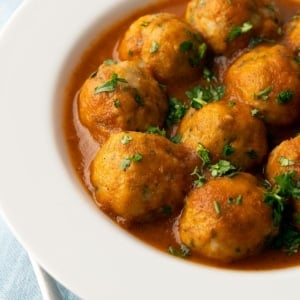
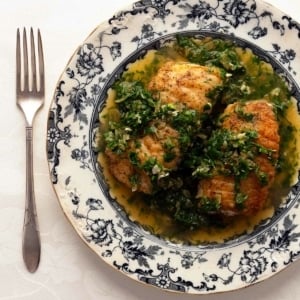
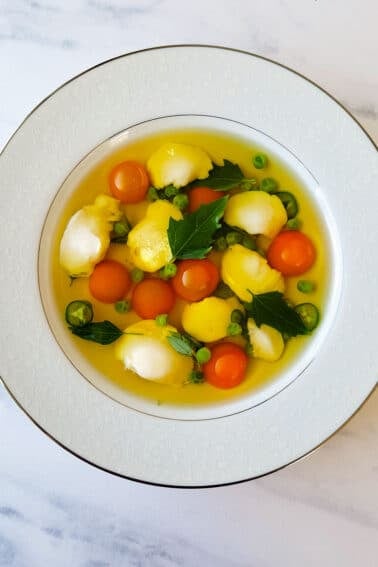


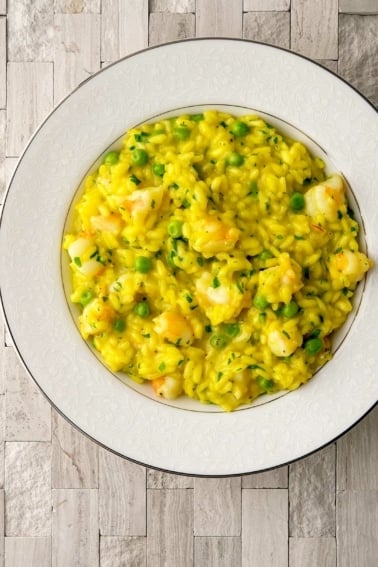
hello again from Texas lots silver drum now 2 ta 3 pounds. did one today far diavlo , was firm like monk fish but sweet. would like ta smoke some have electric pellet grill. need recipe. please love smoked Catfish ya would not know diff from smoked whiting. head off skin on !!
Interesting. I’m sure they are good but they aren’t the fish I know as sheepshead. On the Alabama Gulf Coast where I grew up and here in NC, sheepshead is a salt or maybe also brackish water fish with stripes, also called convict fish. They are fun to catch and taste great because they eat barnacles and other shellfish.
http://localsseafood.com/nc-seafood-guide/sheepshead/
I find fish names and their multiple uses fascinating. I don’t recall ever catching freshwater drum but it sounds like I missed out.
We enjoy drum! Courtbouillon is my favorite. I’ve had fried, fillets. it was firmer, but good. I also can other fish and thought canning drum for croquettes would be like the German carp, which I love. It’s not. Don’t even try. LoL The poor cats didn’t care for it either.
Thanks for giving some love to the Freshwater Drum. Here in Iowa I get into a few every year. I have used the fish on the half shell recipe on the pellet grill and it always comes out great. Last drum I did that with, I used for the meat in your “My Tunafish Sandwich” recipe from “Hook Line and Supper” it was fantastic. What is your take on freezing freshwater drum? I have heard that it doesn’t freeze well.
Michael: I’ve frozen it, vacuum sealed, and it keeps pretty well for a few months. It can be oily, though, which will limit its freezing time.
I’ve also found freshwater drum to be an excellent fish for pickling. It’s a nice firm fish.
My Dad used to poach fillets of a fish he called ‘sheephead’ in Mom’s home canned stewed tomatoes. Think this might be the freshwater drum you’re talking about here. All I know is that the fish was firm and great tasting. And my brother hated catching them–claimed they tasted muddy. Don’t laugh but Dad archery fished carp and pressure canned them for making fish cakes in the winter. The game wardens on the lakes in our area loved it that Dad caught the limit every day and took them home; he really thinned out the numbers that were forcing out other fish. Other fishermen caught carp too but they usually threw them away.
Never understood the prejudices against this fish. I do a lot of spearfishing in the great lakes and we eat a lot of drum in many of the ways listed here. I will add that although the whole fillets may not be ideal for frying, I cut them in to strips and fry them for fish tacos and they are mouthwatering good. Hank’s fish taco recipe here would be a good start!
Greetings Mr. Hank, Joseph from lakes in Hill country Texas formed by Colorado river, lots of silver and Black Drum , folks here on lake LBJ fish mainly largemouth and release, very under fished lake most folks fish lake Buchanan , Stripers , I like Buffalo my largest 60 pounds , so hot here 106 yesterday surface temp 85 , any tips for Drum in this hot weather ??
Joseph: Oof. That’s hot! I’d bleed them then get them in an ice water slurry ASAP. That should help.
Perfect timing Hank. My walleye fishing friends trolling out of Rocky River in Cleveland hate catching them. I kept one the other day. Filleted and fried it and was telling everyone how firm the flesh was. Will definitely keep more and try some of your recipes.